

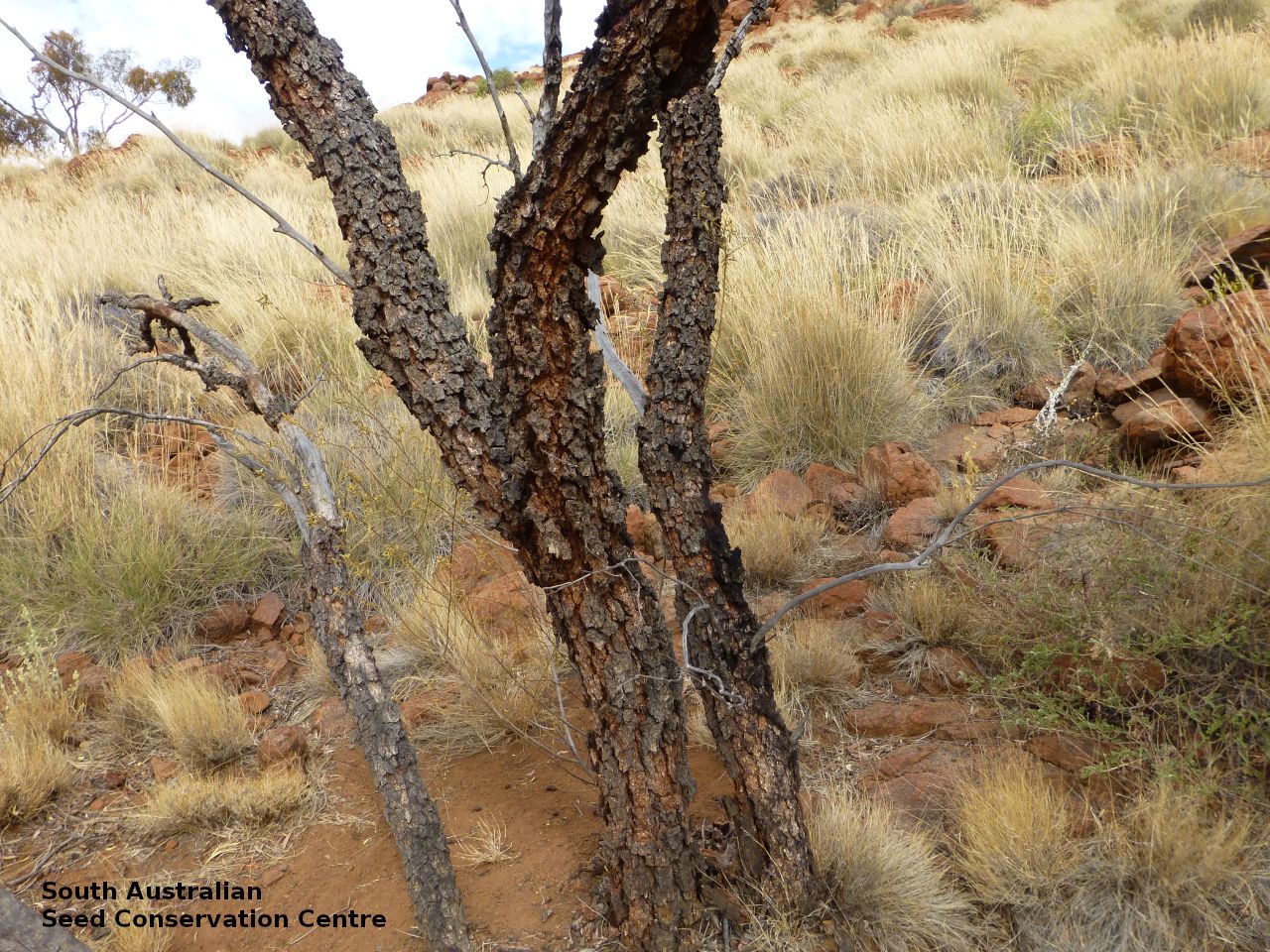
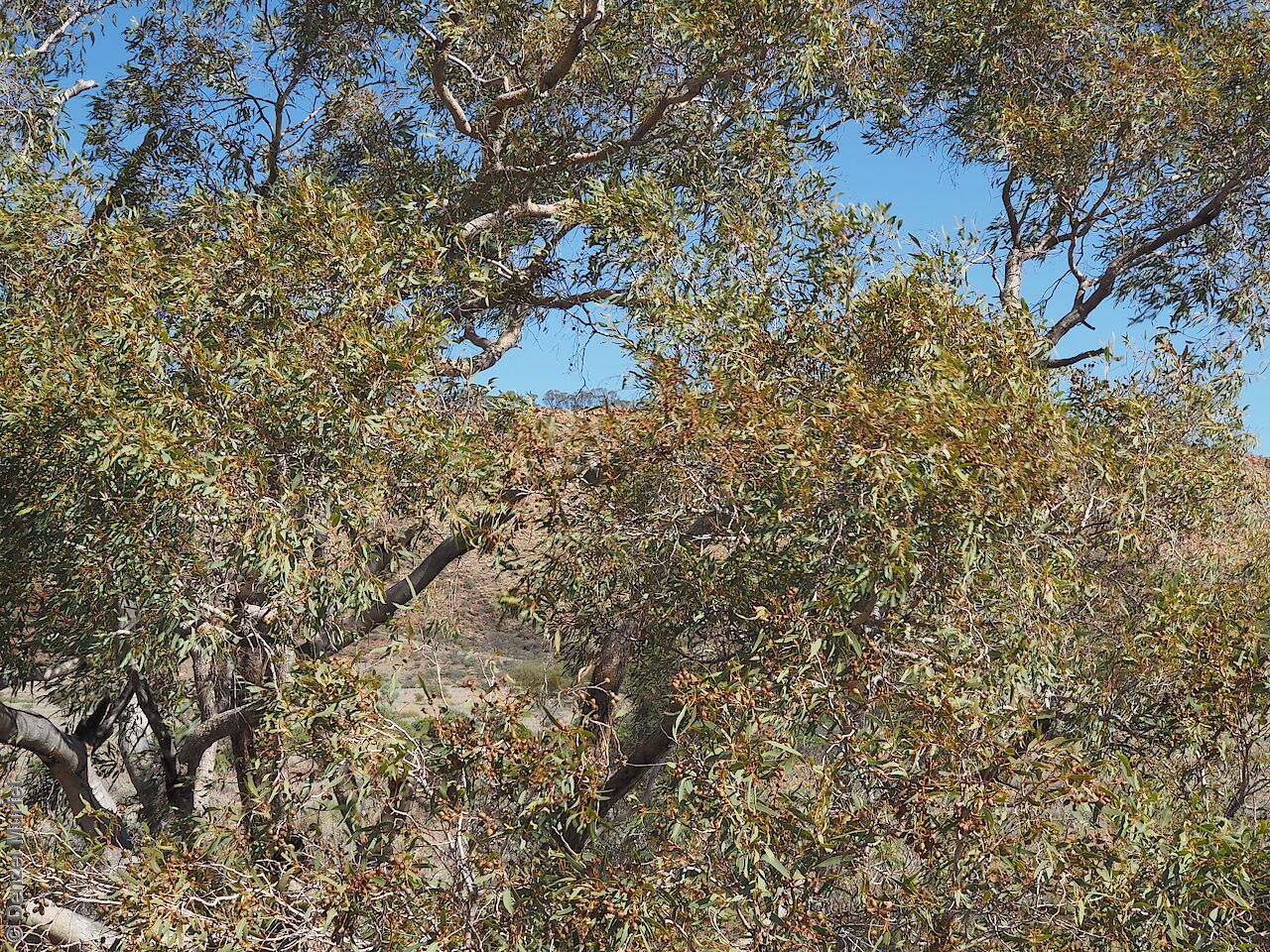
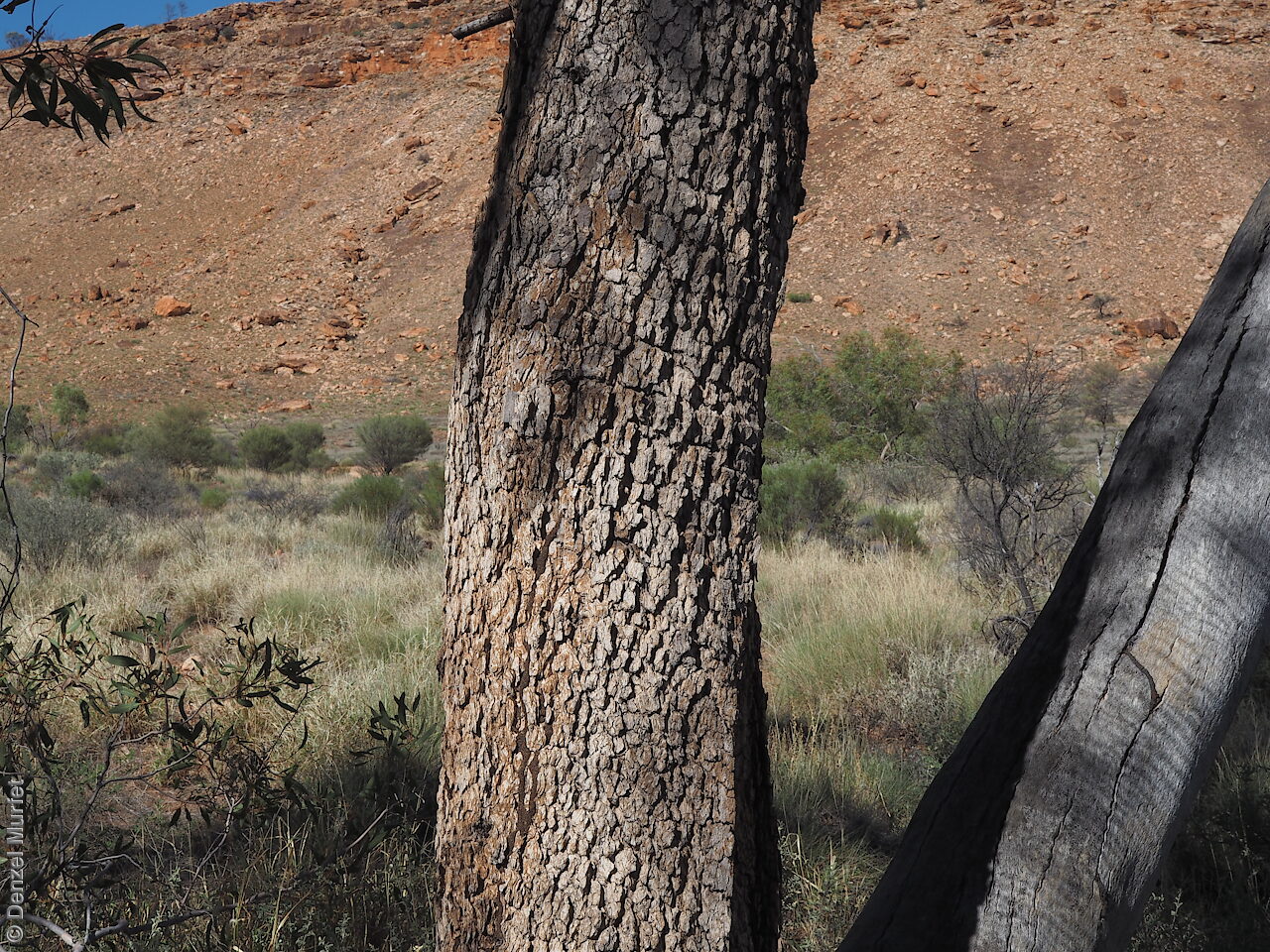
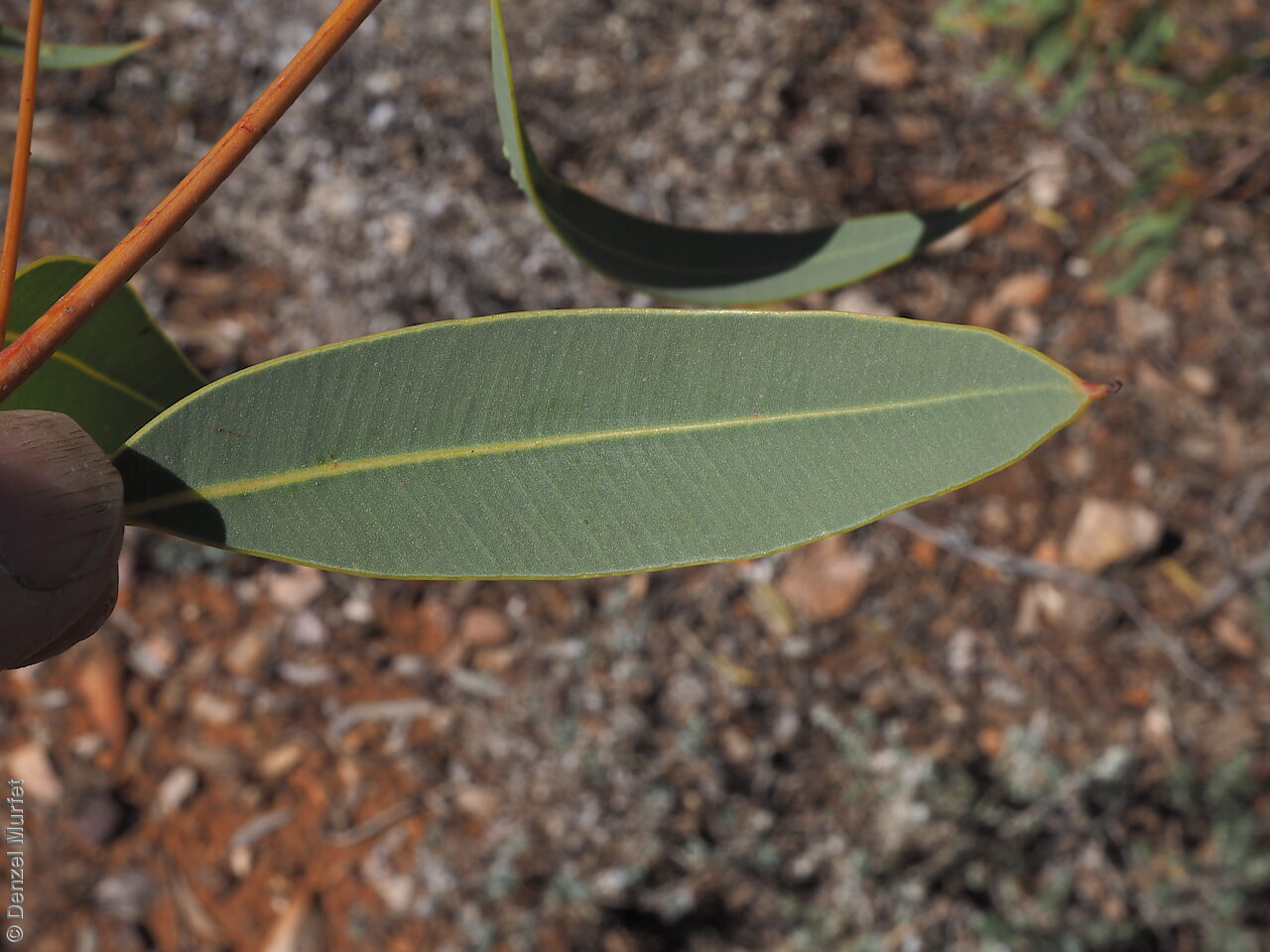
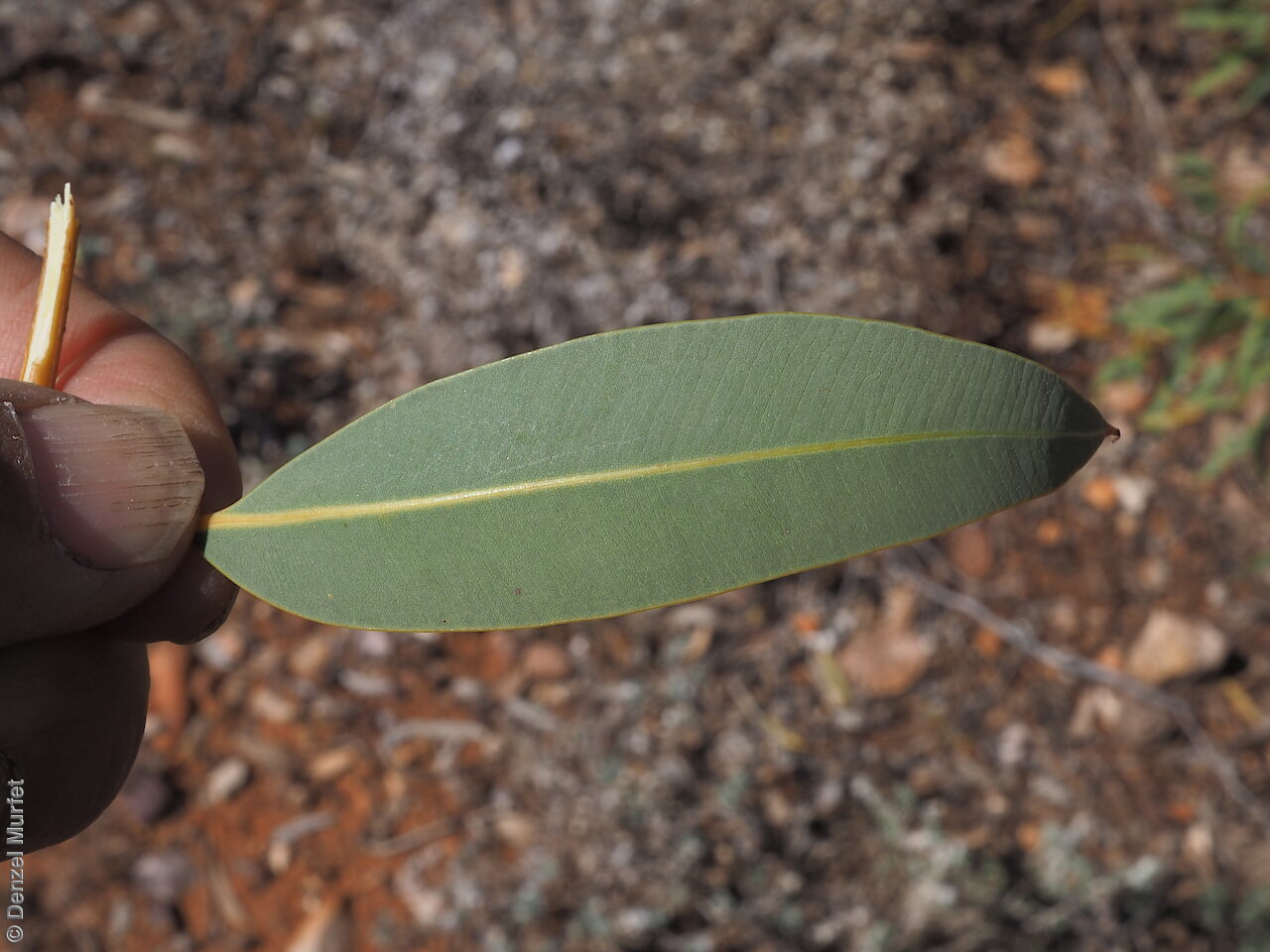
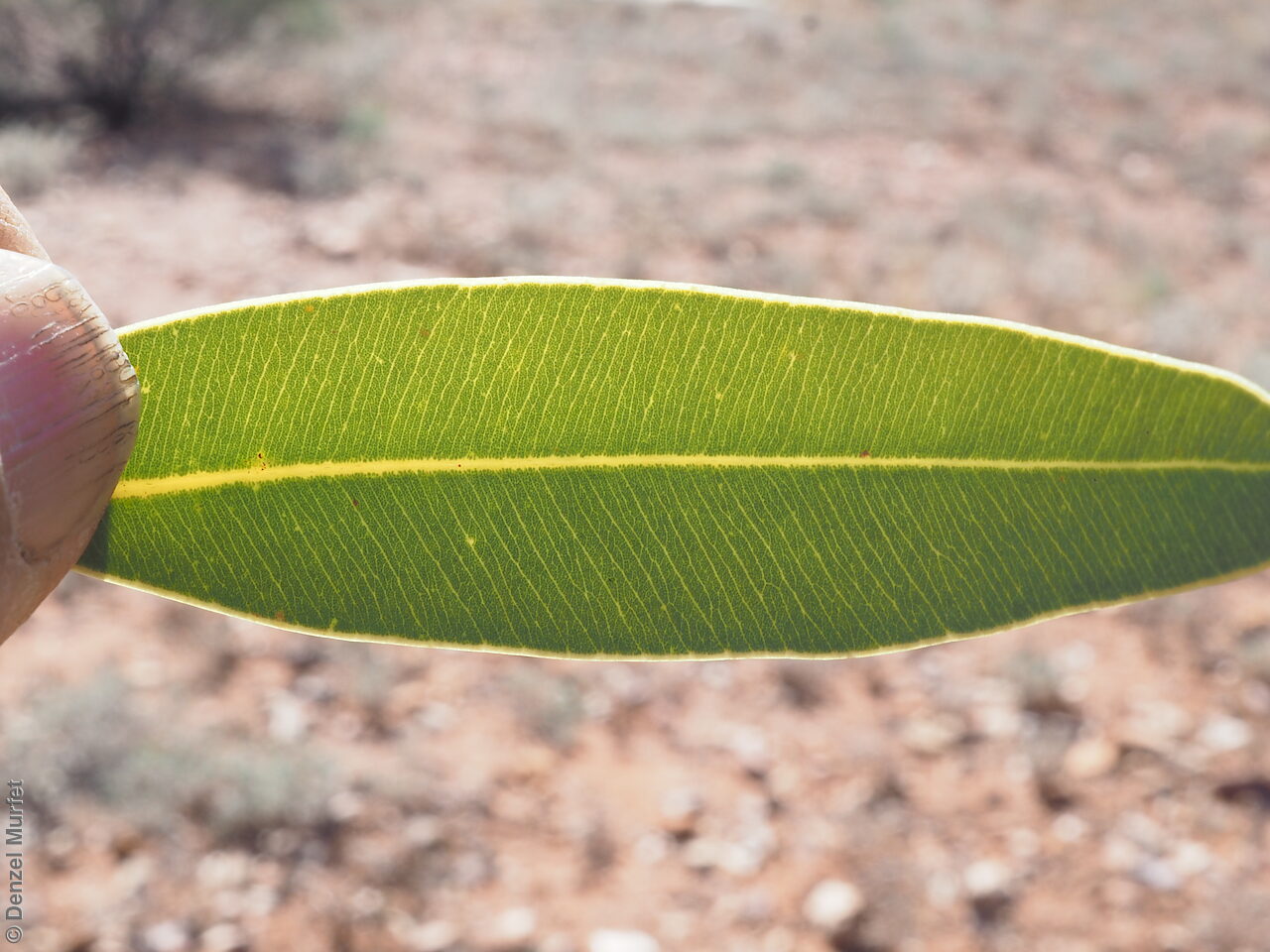
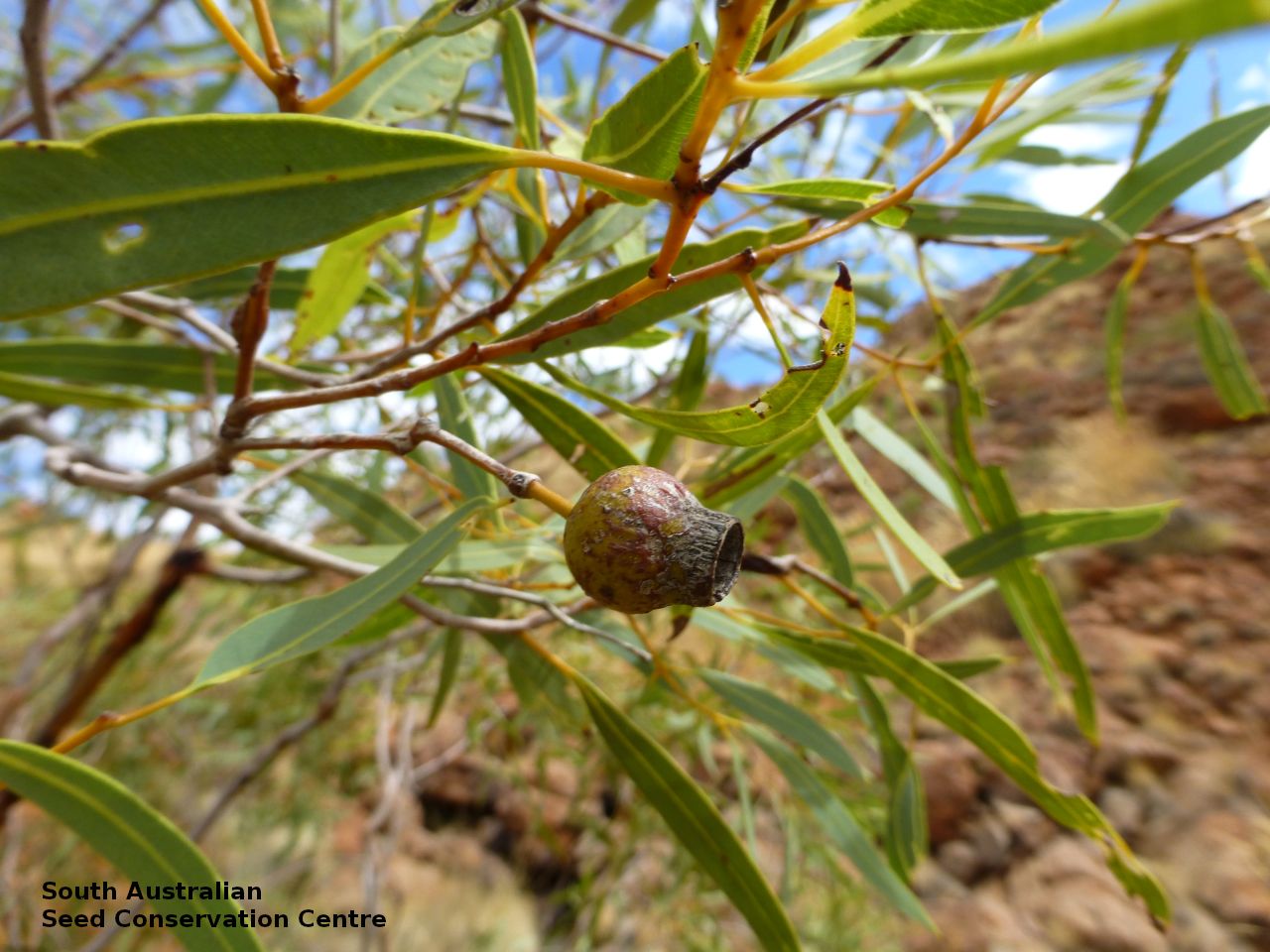
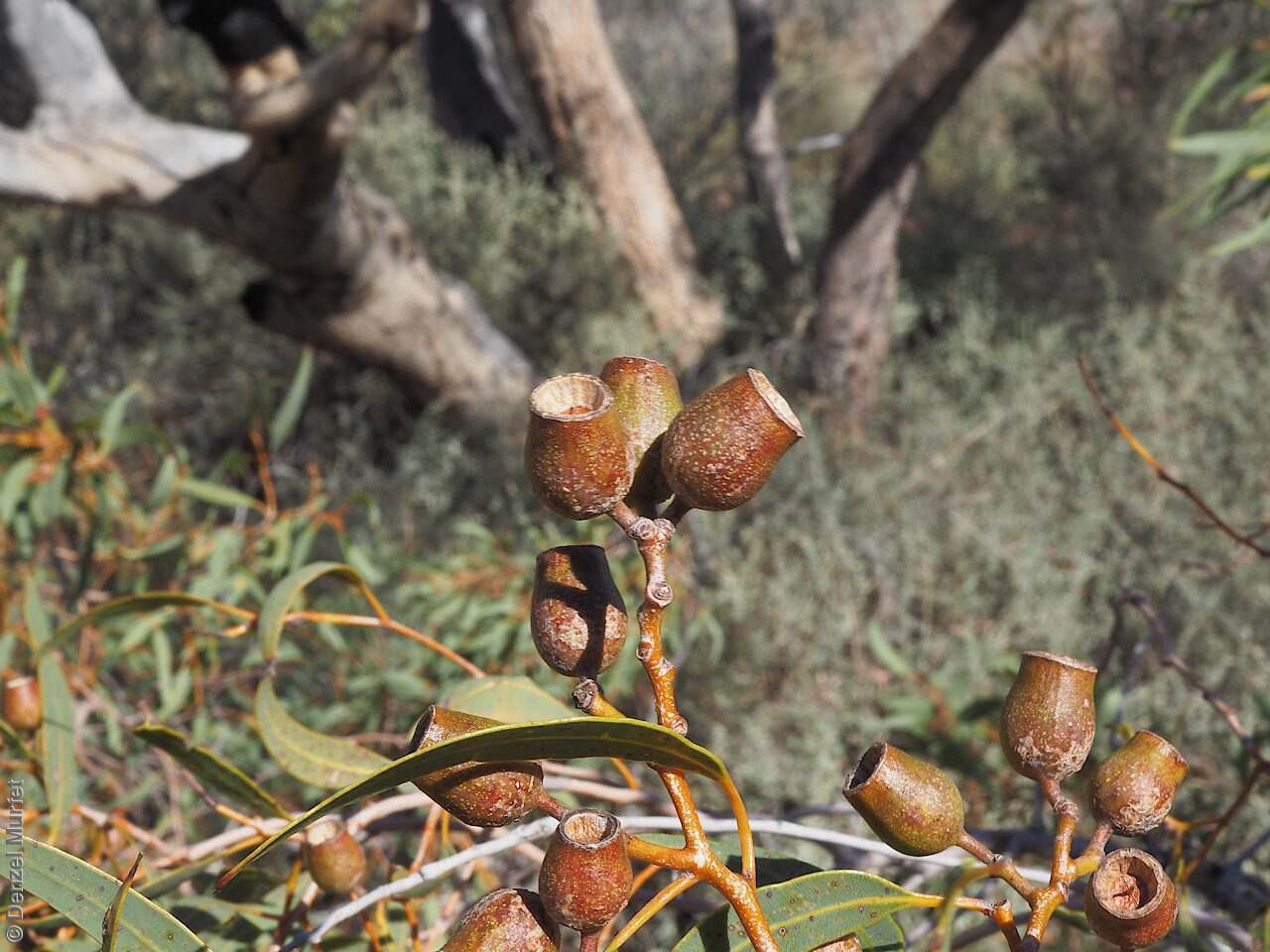
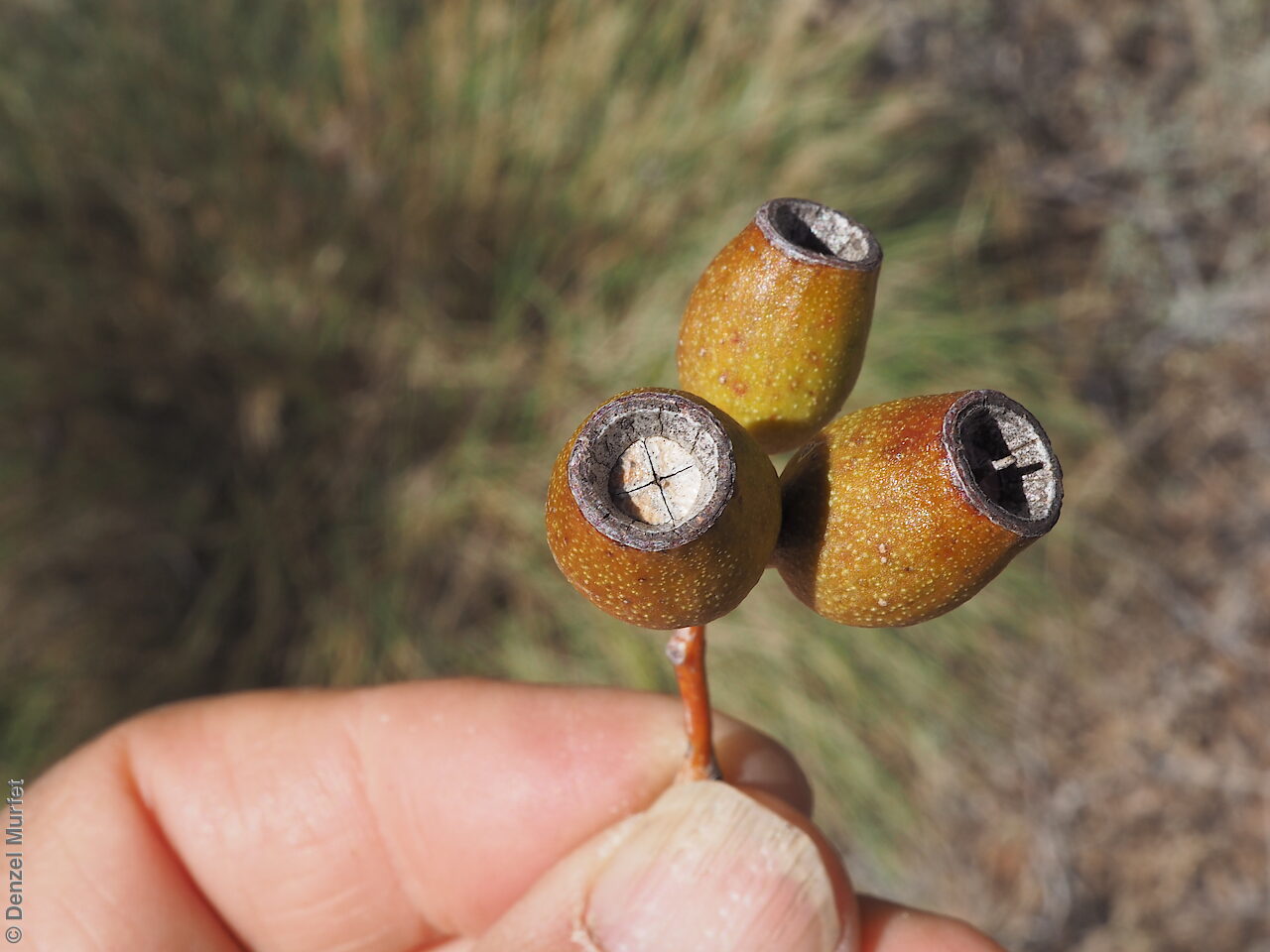
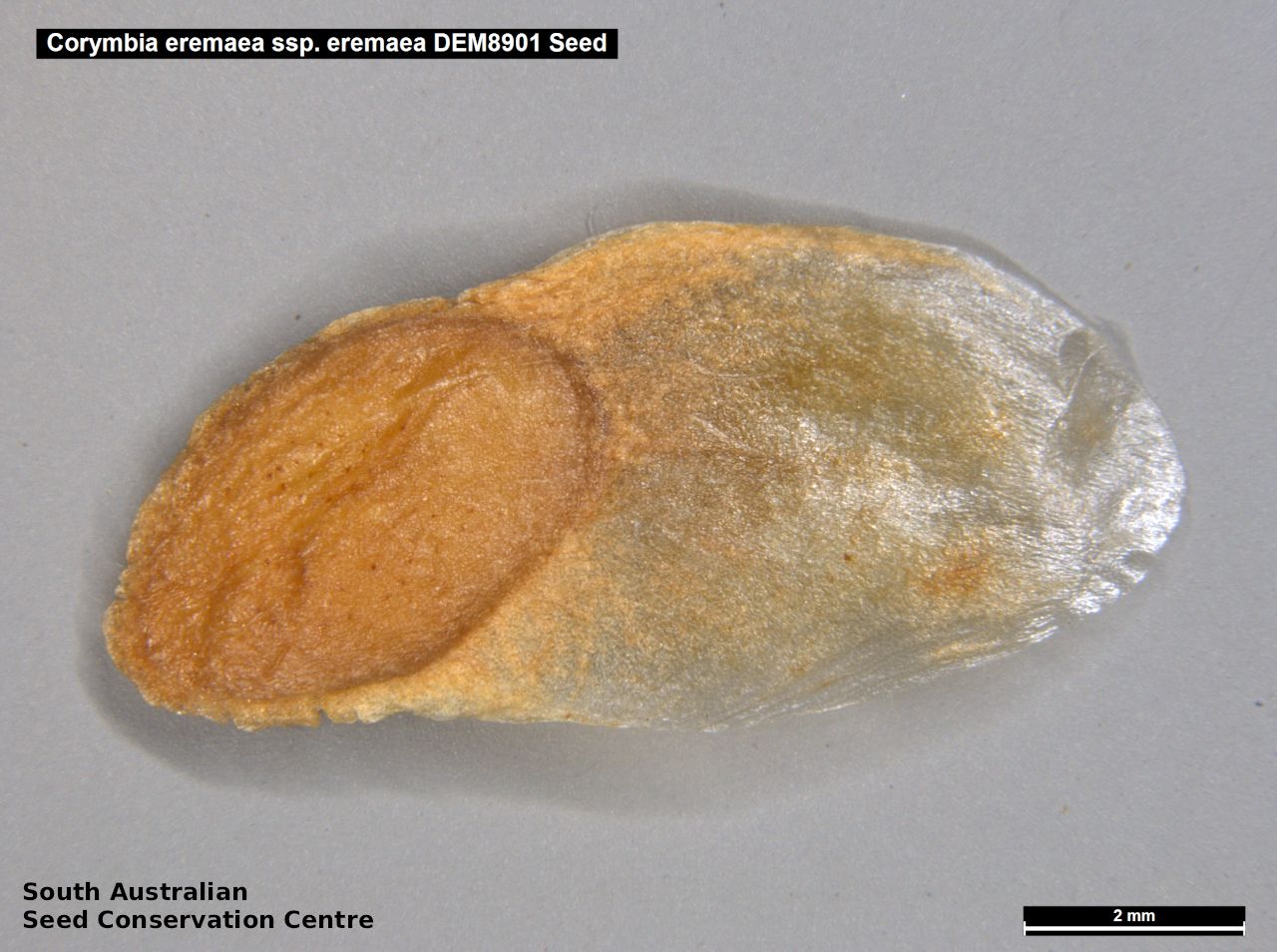
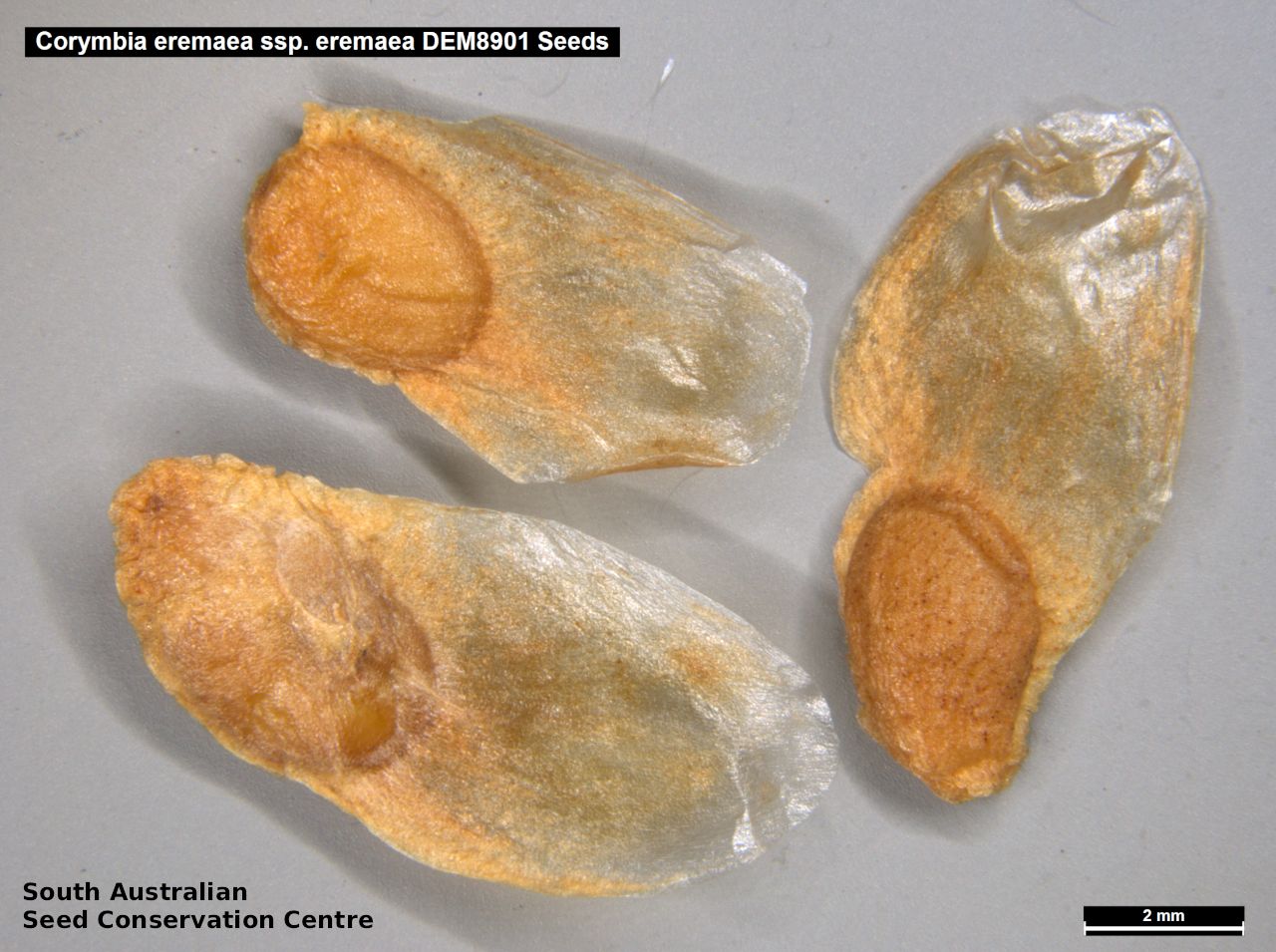


Prior names
Corymbia eremaea ssp. oligocarpa
Eucalyptus polycarpa var. oligocarpa
Eucalyptus terminalis
Eucalyptus centralis
Eucalyptus symonii
Eucalyptus lenziana, partly
Eucalyptus connerensis
Eucalyptus australis
Eucalyptus aff. dichromophloia F.Muell.
Eucalyptus dichromophloia
Eucalyptus eremaea ssp. eremaea
Common names
Muur-muurpa
Range Bloodwood
Hills Bloodwood
Etymology
Corymbia from the Greek 'korymbos' meaning a corymb; referring to the inflorescence where the branches start from different points, but reach about the same height. Eremaea from the Greek 'eremites' meaning of the desert; referring to the preferred arid-land habitat of the species.
Distribution and status
Found in the far north-west corner of South Australia, growing on rocky or stony ridges and slopes at the foot of rocky hills. Also found in Western Australia and the Northern Territory. Native. Common in South Australia. Common in the other states.
Herbarium region: North Western
NRM region: Alinytjara Wilurara
AVH map: SA distribution map (external link)
Plant description
Single or multi-stem tree or mallee to 10 m tall with red-brown to grey rough flaky bark. Juvenile leaves opposite, hairy for first 2-4 pairs, linear to lanceolate, dull green. Adult leaves lanceolate, to 160 mm long and 21 mm wide, dull to slightly glossy, green. Inflorescence in terminal panicles with 7 creamy flowers held erect. Bud ovoid, pale to scurfy white, to 8 mm long and 5 mm wide, bud-cap round and about half the length of the base. Flowering spasmodically and possibly dependent on rain. Fruits are large woody globular fruit to 22 mm long and 22 mm wide, smooth, disc descending and 3-4 valves enclosed below the rim. Seeds are semi-flat orange seed to 5 mm long and 3 mm wide excluding the papery wing at one end. Seed embryo type is folded.
Seed collection and propagation
Collect seeds between January and December. Collect mature fruits that are dark and hard (difficult to break with a finger nail) with the valves un-open any time of year. Leave the fruits in a breathable container in a dry room for at least a week. This allows the valves on the fruit to open and release the seeds. Separate the seeds by placing all the materials into a bucket and shaking it to dislodge the seeds. Pass the material through a sieve to separate the unwanted material. The finer material will contain both seeds (soft) and frass (hard) usually distinguishable from each other but can be very similar in shape and colour. With finer sieves, the seeds can be separated from the frass but this is not essential for storage or propagation. Seeds are non-dormant, viable seed should germinate readily.
| Location | No. of seeds (weight grams) | Number of plants | Date collected | Collection number Collection location | Date stored | % Viability | Storage temperature |
|---|---|---|---|---|---|---|---|
| BGA | 690 (3.91 g) | 29-Jul-2017 | DEM8901 North Western | 30-Jun-2018 | 60% | -18°C |
Number of plants: This is the number of plants from which the seeds were collected.
Collection location: The Herbarium of South Australia's region name.
% Viability: Percentage of filled healthy seeds determined by a cut test or x-ray.